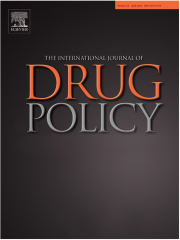Posted on August 01, 2015
Source: International Journal of Drug Policy

Andrea L. Wirtz, , Alena Peryshkina, , Vladimir Mogilniy, , Chris Beyrer, and Michele R. Decker
Background
Female sex workers (FSW) and people who inject drugs (PWID) are at high risk for HIV infection, with FSW-PWID at even greater risk. HIV-related research often focuses on the primary mode of transmission – sexual or parenteral transmission for FSW and PWID, respectively – with less known on how sex work and injection drug use (IDU) are collectively associated with the risk environment experienced by sex workers. We investigated this relationship among FSW in three Russian cities.
Methods
In 2011, FSWs ( N = 754) in Tomsk, Krasnoyarsk, and Kazan were recruited via respondent-driven sampling and completed a survey and rapid HIV screening. Multivariable models evaluated the role of injection history (classified as active: last 6 months, former: prior to last 6 months, and never) with a set of sexual and structural HIV risk outcomes.
Results
IDU was common: 11% actively injected drugs and 11% were former injectors. HIV infection was most prevalent among active injectors (AOR: 6.7; 95% CI: 2.4–18.9) and former injectors (AOR:4.5; 95%CI: 1.7–11.6), compared to non-injectors. Some 6–8% of non-injecting FSWs reported recent physical or sexual client violence and 23% police extortion. Compared to these non-injectors, active injecting was associated with unprotected anal sex (AOR: 2.8, 95%CI: 1.2–6.4), client violence (AOR: 7.3, 95%CI: 2.1–24.7), and police extortion (AOR: 3.0 95%CI: 1.5–5.9%). Self-reported sexual and structural risk outcomes were also more prevalent among active compared to former injectors; however, few differences existed between former and non-injectors.
Conclusions
FSW experience sexual, structural, and HIV risk outcomes and these risks are amplified for actively injecting FSWs. FSW who stopped injecting drugs demonstrated risk profiles closer to those of sex workers who had no history of injection. HIV prevention programs and outreach can provide opportunities to include harm reduction interventions and linkage to treatment for FSW to move FSWs towards lower risk environments.